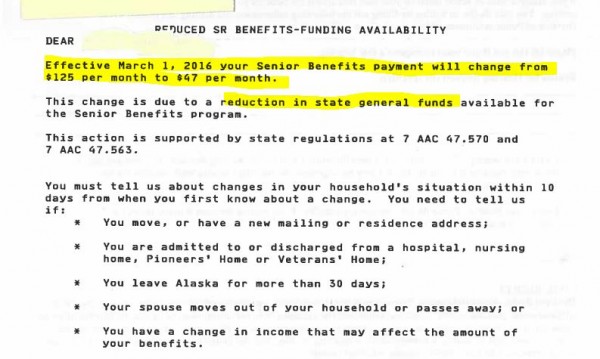Thousands of low-income seniors will see a drop in their state benefits starting March 1. Officials say they have tried to mitigate the negative impacts on beneficiaries, which stem from last year’s budget cuts.

In a letter sent out February 18th by the Senior Benefits Office in Wasilla, Alaskans over 65 years old living below or near the poverty line were notified that many would see a reduction in cash assistance paid every month to help with fuel, food, and medication costs.
15.8 percent of seniors in Alaska are part of the program, administered by the Division of Public Assistance within the state’s Department of Health and Human Services. Though assistance is given to 11,746 seniors state-wide, cuts were narrowed to 5,348 of the recipients in the highest income bracket in order to protect the most vulnerable seniors.
“The decision to affect the top-tier was made in order to minimize the impact as much as possible for the lowest income seniors,” said Denise Daniello, executive director of the Alaska Commission on Aging.
That means an individual living on $25,760 will see his or her benefits go from $125 a month to just $47–a reduction of 62 percent.
Lower-income households will be unaffected. According to figures in a fact-sheet put out by the department, a senior living on $11,040 a year will continue to see $250 a month in assistance.
While DHSS spokesperson Sarana Schell wrote in an email that no more cuts are expected to the program in the 2017 budget, Daniello believes that that amid drastic budget shortfalls for the state nothing is certain.
“That’s like looking into your crystal ball,” she said. “I think all programs are susceptible to cuts.”
The Senior Benefits Program expires in 2018 unless law-makers opt to renew funding for it.
Zachariah Hughes reports on city & state politics, arts & culture, drugs, and military affairs in Anchorage and South Central Alaska.
@ZachHughesAK About Zachariah




